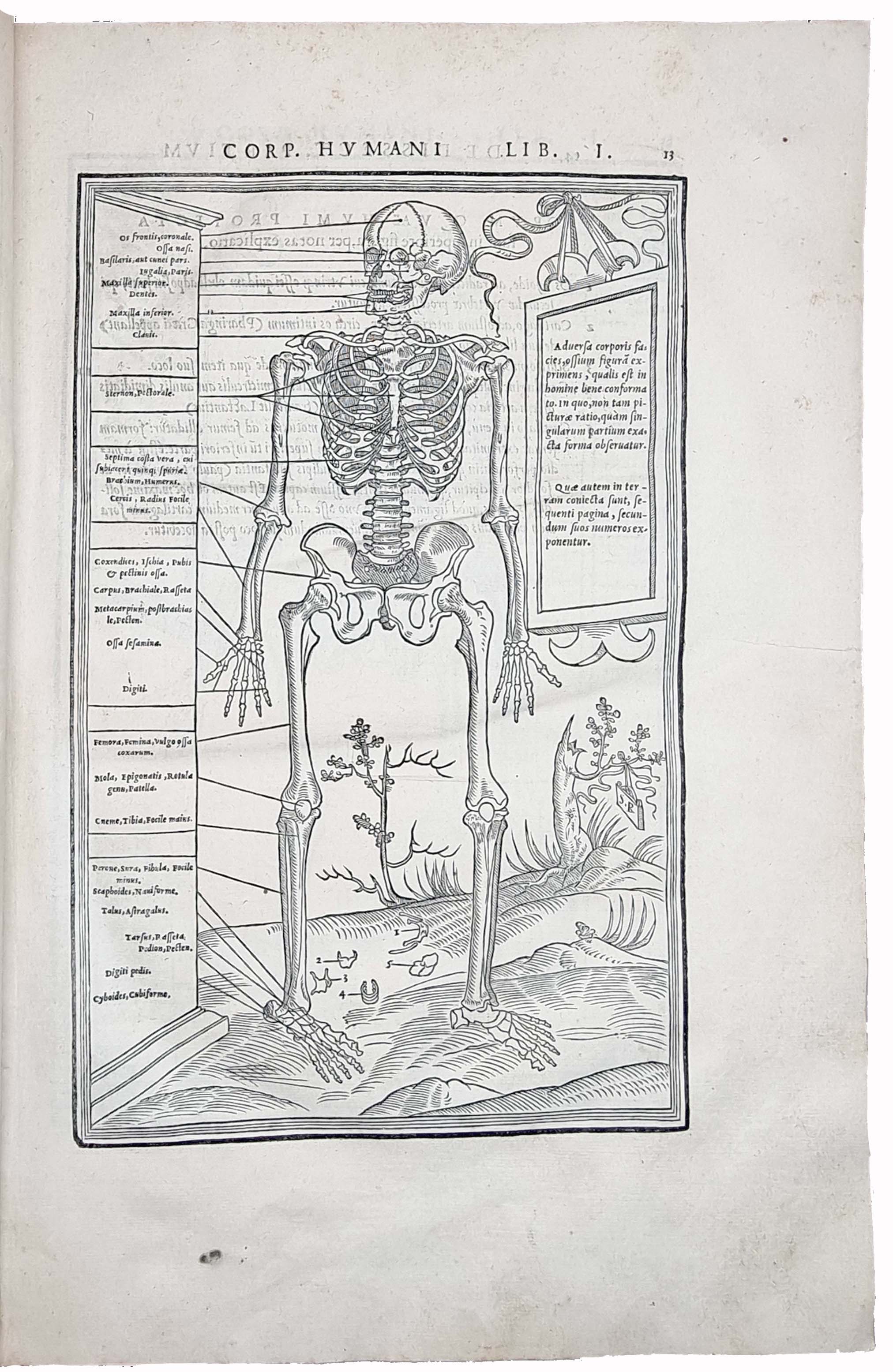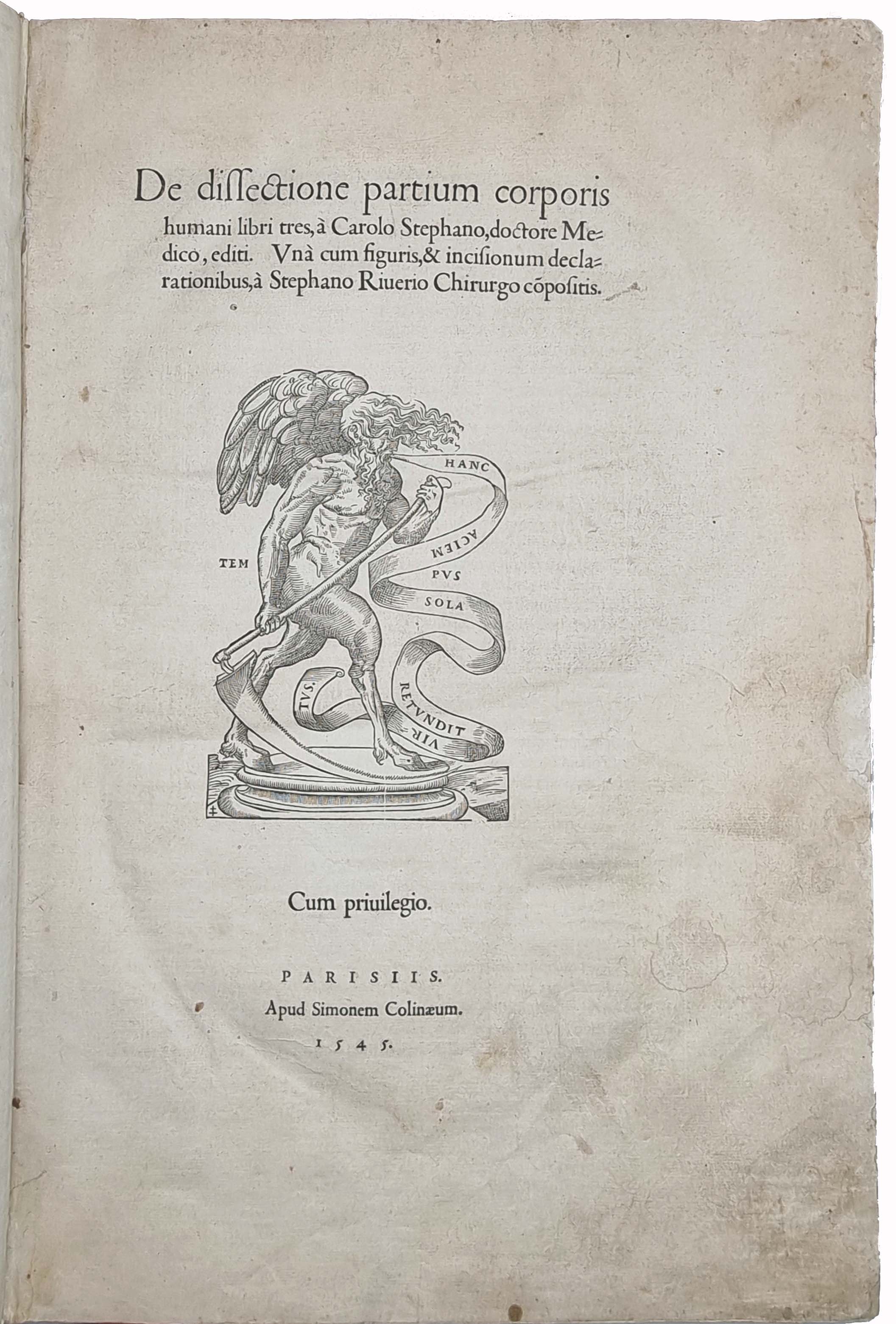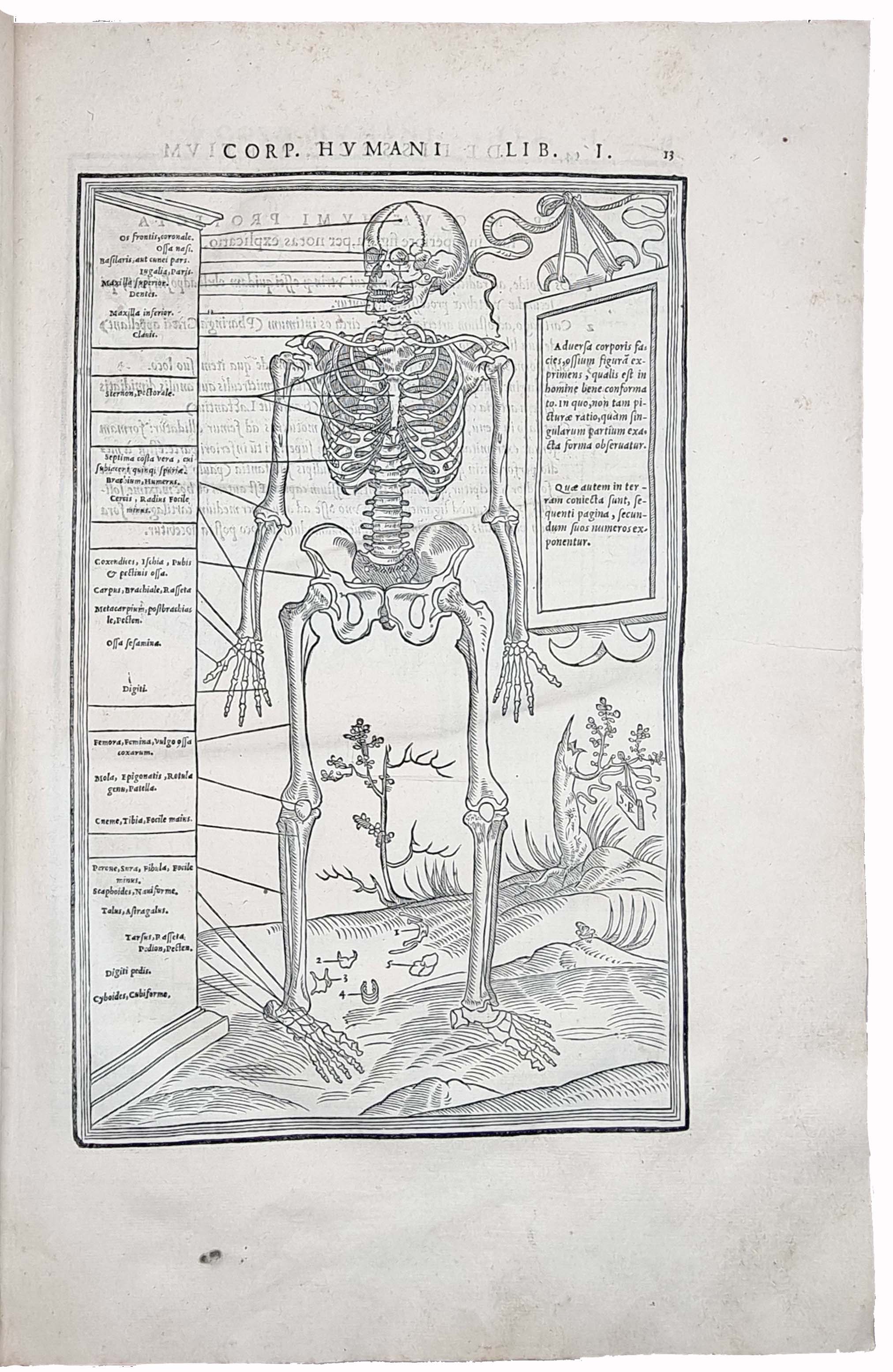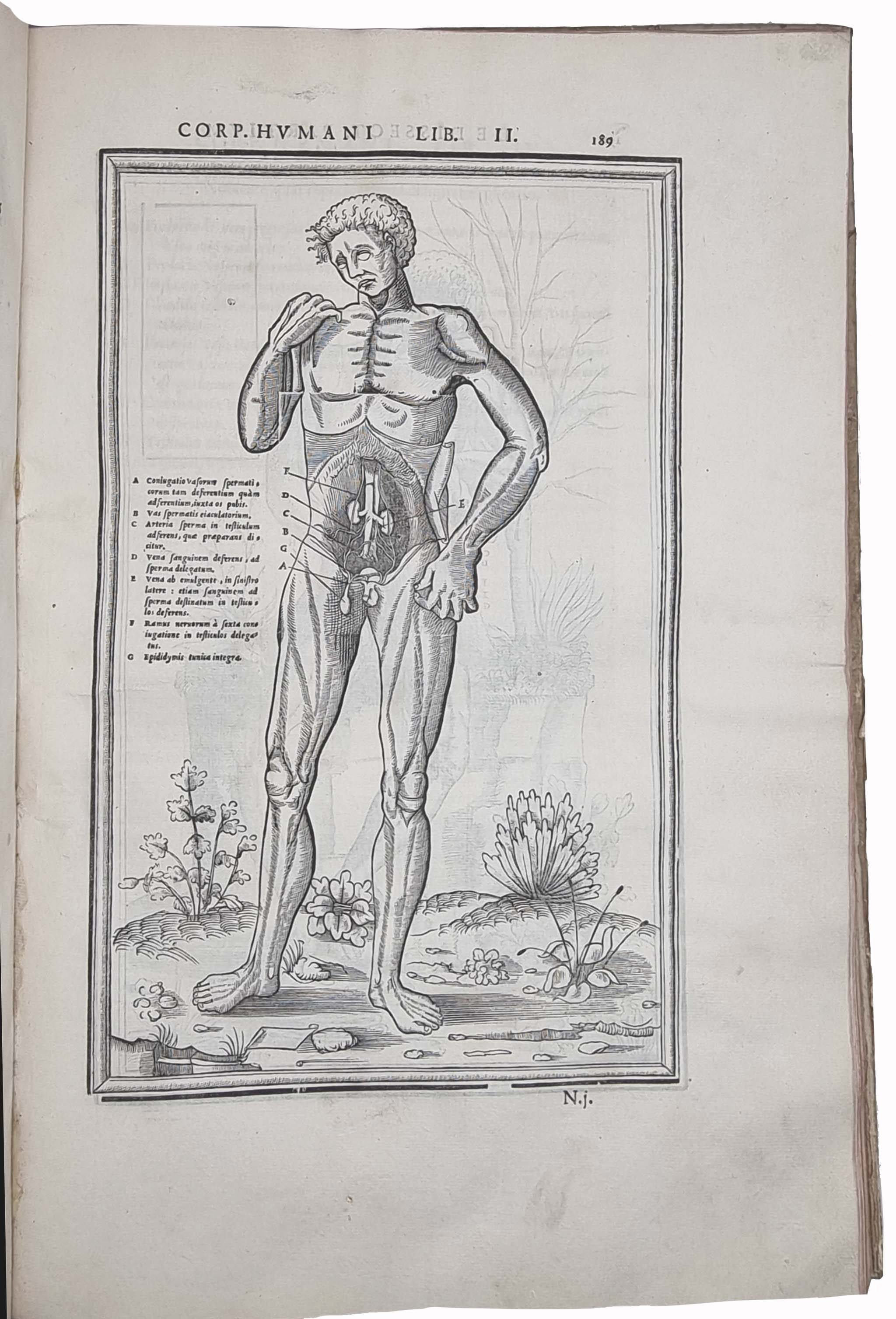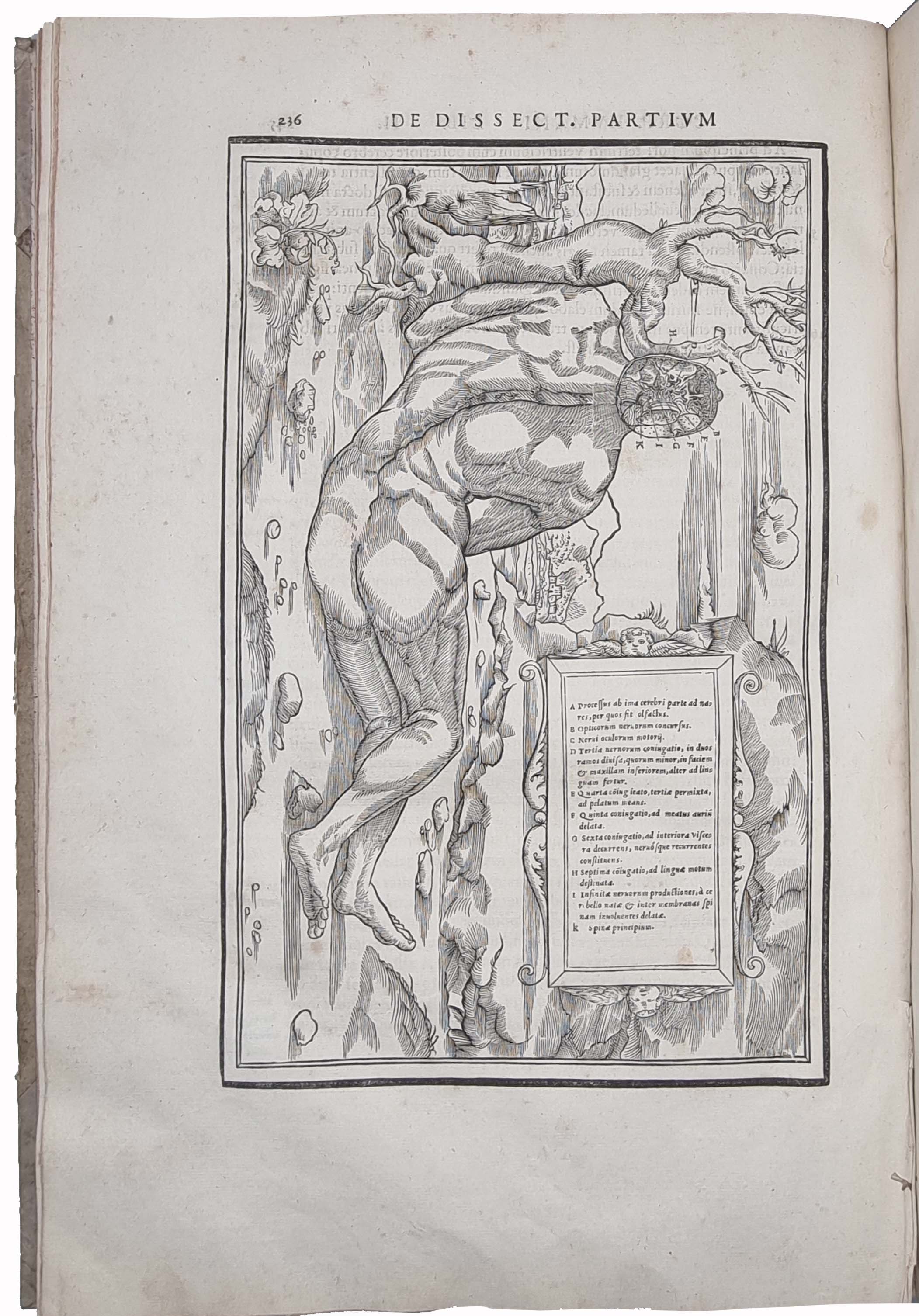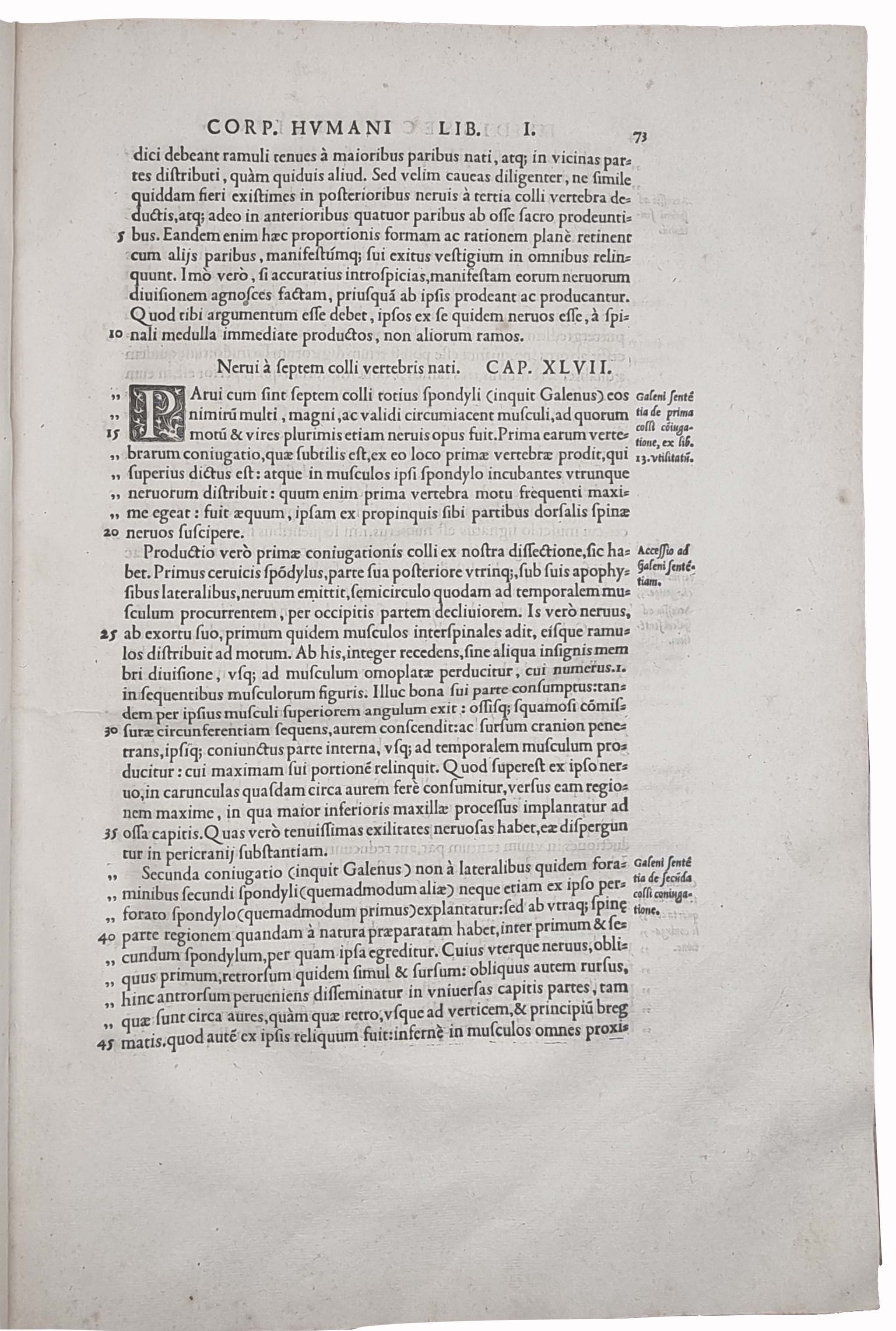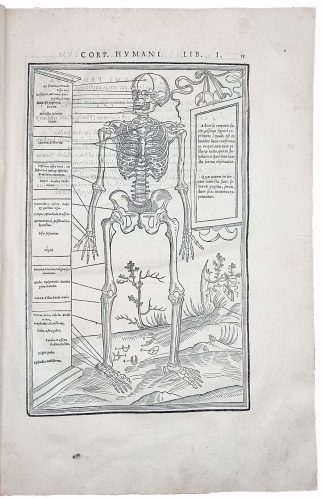ESTIENNE, Charles
LARGE PAPER COPY
De dissectione partium corporis humani libri tres… cum figuris, & incisionum declarationibus, à Stephano Riuerio chirurgo compositi
Paris, apud Simonem Colinæum, 1545£35,000.00
FIRST EDITION, folio, pp. (xxiv) 375 [i. e. 379] (i). * ,** , A-Z , 2A . Roman letter, some Italic and Italic side notes. Simon de Coline’s large ‘Tempus’ device (Renouard Colines, No. 1) on title, 62 full page anatomical woodcuts, and 101 small medical illustrations to text, fine white on black criblé initials in three sizes, occasional early annotations. Light age yellowing, some minor mostly marginal spotting, the odd marginal mark or spot. A fine, large copy (380 x 250 mm), crisp and clean in eighteenth century three quarter vellum overs thick paper boards, lacking label, a.e.r. a little soiled and rubbed at extremities.
A lovely, wide margined, copy of the rare first edition of one of the most beautifully illustrated works of the French Renaissance. The woodcuts are of great historical, artistic and scientific interest. “This magnificent folio volume is one of the finest of all anatomical treatises.” (Eimas, p.93). “The first cut is signed with the initials “S.R.” of the surgeon Etienne de la Rivière, who assisted Estienne in preparing drawings of the anatomical details. Nine of the cuts are signed by Jean Jollat, either with his name or with his sign of Mercury. A number of the Jollat blocks also have the dates 1530, 1531, or 1532. Six of the Jollat blocks and one other block also have a cutter’s signature of the Lorraine cross, probably from the Tory atelier (Jacquemin Woeiriot?). … most of the cuts have the anatomical portions of the figure on separate pieces inserted into the blocks. In two articles, C.E Kellet … suggests that the male figures in this series which are clearly corpses supported by trees and masonry may be based on anatomical designs known to have been made by Giovani Battista Rosso from disinterred bodies from a burial ground at Borgo, the Rosso sketches providing a figure into which the La Rivière dissections could be inserted. E. Weil .. concludes that the figures were originally intended for an anatomy for artists and were adapted to Estienne’s purpose by the use of the medical insets.” Mortimer. (Weil’s catalogue description is tipped onto pastedown). Estienne’s anatomical work was in progress for many years before it was finally published, apparently due to plagiarism by two German printers; in the meantime, Vesalius’s anatomical magnum opus was produced in 1543, and Estienne’s work was then delayed by Vesalius’s privilege.
A medical work of both textual merit and beautiful illustration. “Had ‘De dissectione’ been published in 1539, there is no question that it would have stolen much of the thunder from Vesalius’ Fabrica… Despite its tardy appearance, however, De dissectione was able to make numerous original contributions to anatomy, including the first published illustrations of the whole external and venous nervous systems, and descriptions of the morphology and purpose of the ‘feeding holes’ of bones, the tripartite composition of the sternum, the valvulae in the hepatic veins and the scrotal septum. In addition, the work’s eight dissections of the brain give more anatomical detail than had previously appeared” Norman 728. Choulant describes the work of the woodcutters as ‘particularly excellent’; some have been attributed to Geoffrey Tory. They certainly included Estienne Riviere, a surgeon who assisted Estienne in both his dissection and drawing, and Francois Jollat; the female figures are best. The text is actually more instructive than the illustrations “and is particularly significant from the view point of the history of anatomic discoveries, since Estienne himself was a dissector, began his work long before Vesalius”, Choulant.
“The illustrations are the earliest, except those of Leonardo, in which whole systems, venous, arterial or nervous are shown. Estienne’s best department is, perhaps that of arthrology. He was the first to trace blood vessels into the substance of bone. He was the first to remark upon the valves of the veins. Most remarkable of his observations is that of the canal in the spinal cord.” Singer.
“One of the finest woodcut books of the French Renaissance, in which art and science are ideally merged.” Schreiber 222
“This magnificent folio volume is one of the finest of all anatomical treatises.” Heirs of Hippocrates 153
BM. STC C16 Fr p155 Mortimer Harvard I 213 (Fr. edn. reprod. illustration), Eimas 256; IA 165.250. Renouard pp. 409-10, Brun 198, Choulant pp152-155. Durling 1391, Wellcome I 6076. Garrison-Morton 3781846.In stock


